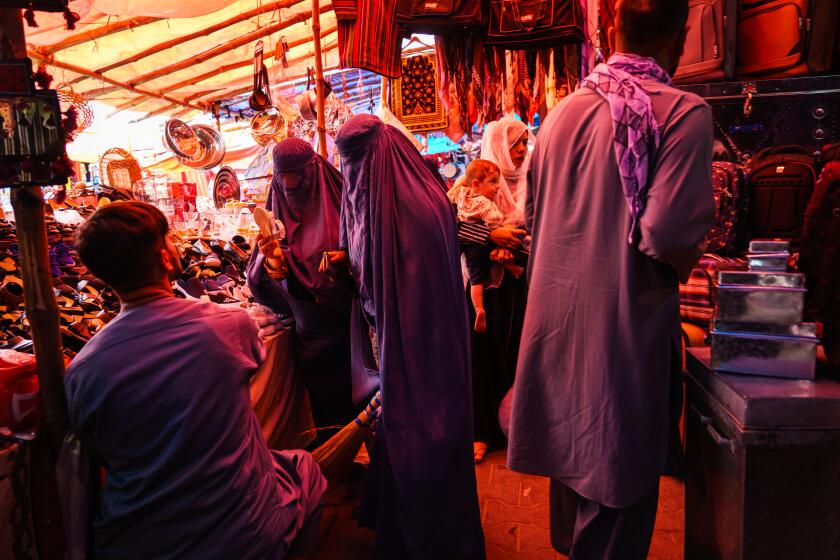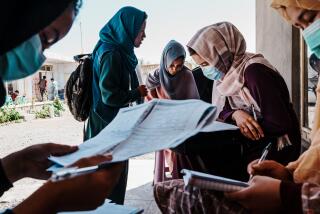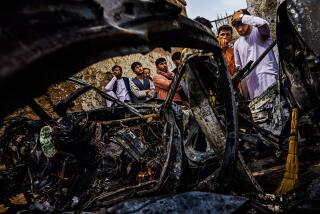Last stop in Kabul: Airport is chaotic way station with scenes of pathos
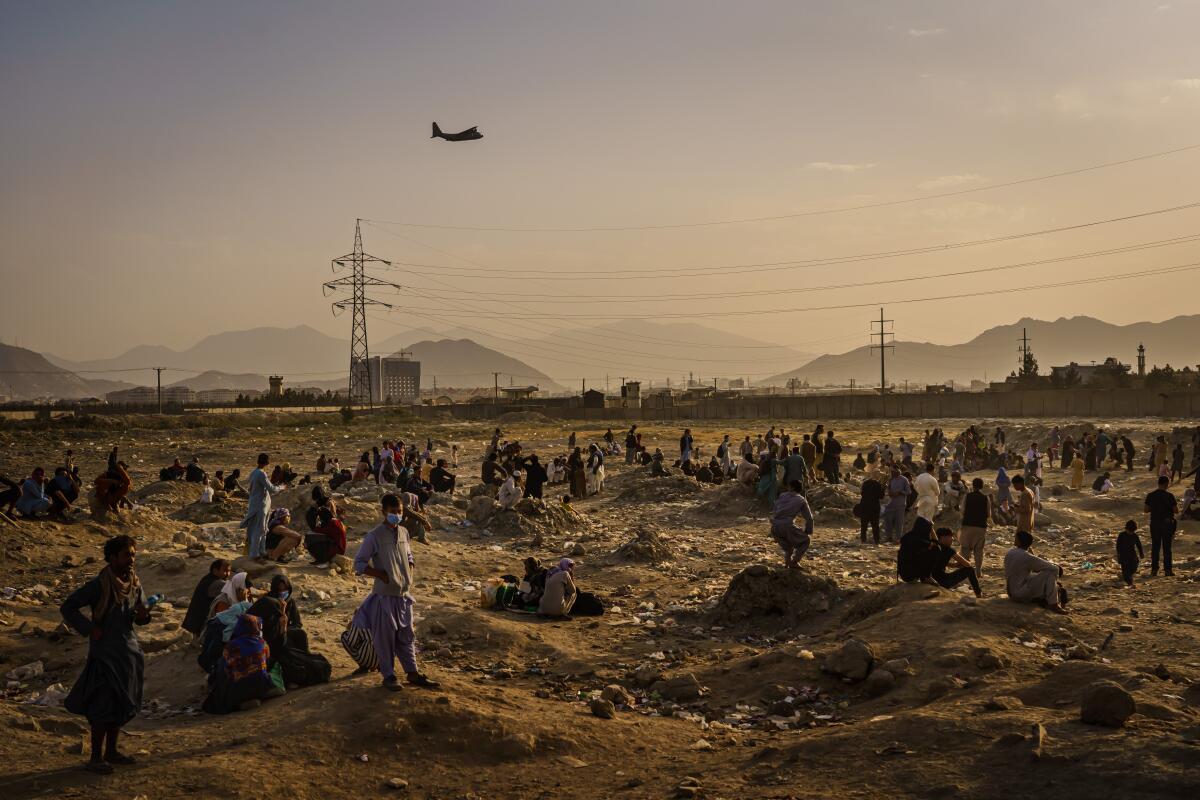
KABUL, Afghanistan — The turboprops roar every quarter-hour or so as the planes lumber down the crowded tarmac. The sounds go on from morning till well into the night.
There are also sounds from above. The whump-whump of two-rotor Chinooks and Black Hawk helicopters buzzing nearby. The fireworks-sizzle of a C-17 heaving itself into the air with a necklace of flares and a puff of starbursts, joining the traffic jam in the skies above Kabul airport.
More than 21,000 people were flown out of Taliban-controlled Afghanistan in the 24-hour period that ended early Tuesday, U.S. officials said, the airlift’s biggest day since it began.
U.S. and its allies Friday stepped up evacuation efforts from the Afghan capital, Kabul, where thousands of desperate people ringed the airport
But behind the scenes, the evacuation effort is chaotic, sorrowful, smelly, dirty — and dangerous.
Gazing at the action from the ground are hundreds, occasionally thousands of Afghan men, women and children, standing in long queues that snake toward and into parked aircraft.
Corralled by burly soldiers — Americans, Germans, Qataris, British, Belgians, bristling with armor and backpacks or reclining inside a mine-resistant armored vehicle — they sport few belongings: a carry-on suitcase, a backpack, some plastic bags. Hardly enough to encompass the life they have abandoned.
To the side of the airfield are other waiting Afghans, squatting in disorganized gaggles, watched over by more soldiers distributing water and MREs (meals ready to eat). Exhaustion appears on every face.
Only the children seem to have the energy to play or dig into the food packets the soldiers hand out for sweets. A trio of little girls break into smiles as they dip their hands into a packet of strawberry jam, then lick their palms, leaving a red, syrupy imprint on their chins.
The Afghans here have little time to ponder the complex running of a war-turned-evacuation machine. For Americans, losing the war means going home. For these people, it means losing a home, a country, a life, a society and an existence they had constructed, on a new but ultimately feeble foundation, over the last 20 years.
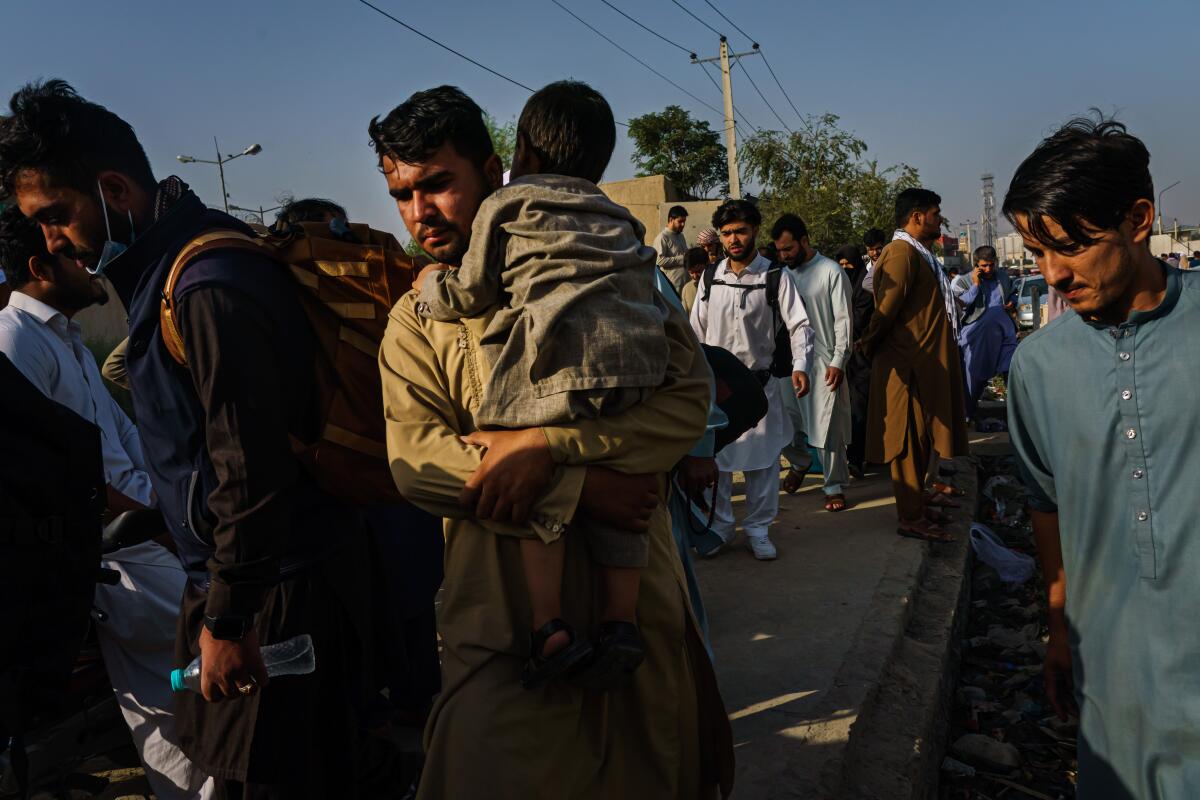
Yet those who have made it this far are the lucky ones. To get here, you have to have the right citizenship or blood ties to someone who does; the connections to foreign organizations that can or even want to make the effort to endorse your evacuation; or the documents to prove to someone, somewhere, you deserve a seat on one of the coveted flights spiriting you away from an Afghanistan under Taliban rule.
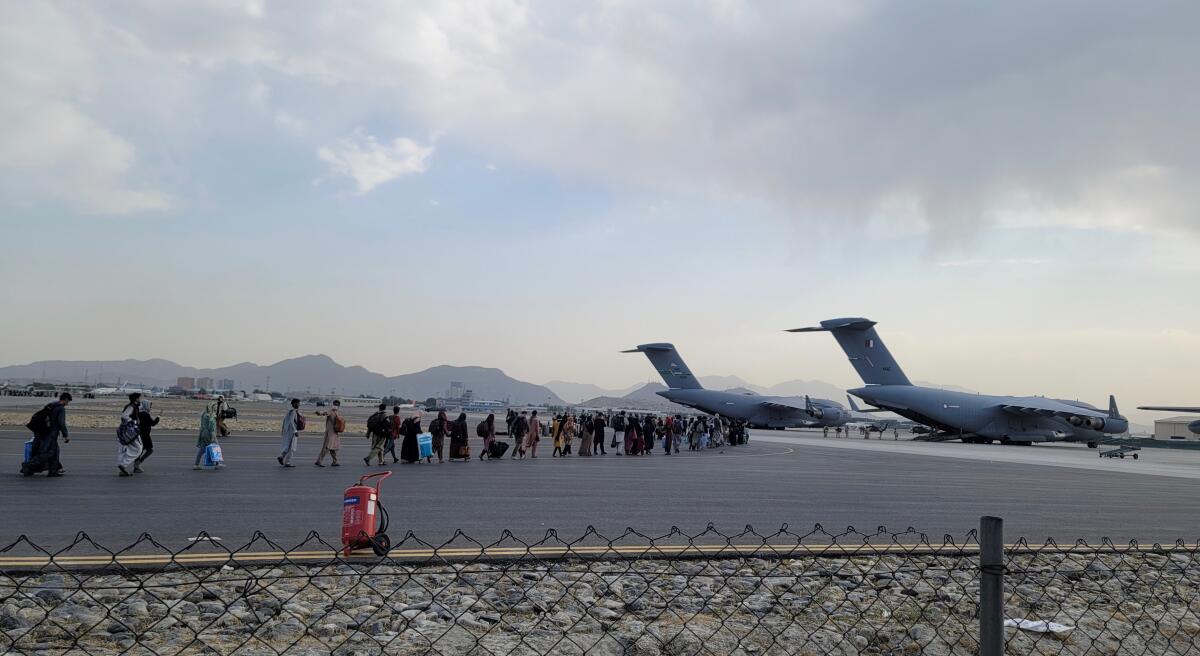
But even with that, you still have to reach the gates. In the first week, it was a lethal melee pitting residents clutching documents and worn-looking luggage against uniformed men with wraparound glasses and the quick-to-anger swagger of lethal paramilitary fighters.
They were some of the last remnants of the U.S.-supported Afghan security force. Far from protecting fellow Afghans, they used ropes, truncheons, sticks, whips, rifle butts, shots in the air and — when all else failed — shots in bodies to keep their compatriots back from a chance at escape.
On Monday, more than a week after it all started, the proceedings took a different turn. The guards established a perimeter with razor wire, concrete barriers and a hyper-aggressive attitude. The crowds mostly kept a respectful distance but in sight of the gate, eddying like pilgrims gathered around a shrine, only breaking their vigil to watch a plane arc slowly by.
Many had no valid claim to be here, save for a forlorn hope that a certificate or citation from a long-gone contractor or military unit could get them a ticket out.
One of those was Zohra, a young girl in her early 20s who had worked in maintenance on Russian military helicopters and the AC-208, a reconnaissance plane provided by the U.S. to the Afghan Air Force. She clutched a certificate of appreciation for her work from Textron Systems, a U.S. aerospace and defense development and manufacturing firm based in Providence, R.I.
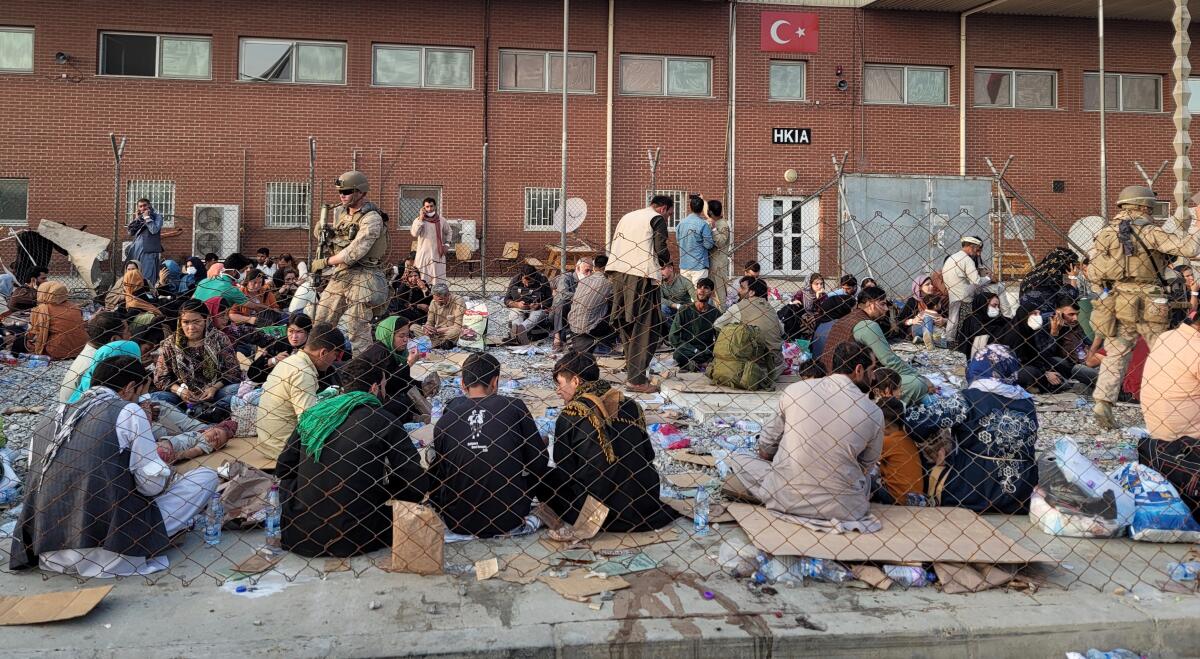
It was unclear if she had communicated with the company. Still, standing beside her mother in the dust-swept field, she presented the certificate and documents to anyone she thought could help her case.
There was also Sayed Sadat, a 22-year-old who tugged at the arm of a visiting reporter to explain that he needed to get out.
“I’m a student. You know what will happen to us here,” he said, pleading for any help in getting him past the guards at the gate. “We have no future.”
Those assembled represented a mix of Afghan society. An older woman said her husband had a U.S. passport but was disabled and could not walk. Another woman, watching a man who was shot in the leg get taken inside for treatment, said in brisk English that her husband was a surgeon and could assist if they could just come in.
At another gate was a general, stripped of his uniform and the stern look he once wore with it, squatting in a grassy patch while guarded by a mix of his onetime allies and adversaries.
Near the entrance to the departures building, behind some concertina wire and cement barriers, stood U.S. and other NATO troops, thrust into a logistics morass that would be tricky even without an adversary waiting to pounce if they violated the Kafka-esque rules on where to go so as to avoid the Taliban.
The disorderly state of the airport hints at what will remain of the Afghanistan the Americans tried to construct.
The site of the evacuations, the military side of the airport, is rundown but functional, a backdrop to a clunky ballet that gets a little bit smoother after each performance.
But farther afield, past the row of Black Hawks and a hangar with partially disassembled aircraft, and across the runways shimmering in the heat, is the airport’s civilian side, where one finds parked Kam Air planes and a few sky bridges jutting out from the terminal but leading to thin air.
The tarmac is lined with the detritus of those who had run the gauntlet and succeeded. A passport photo, a playing card from a lost deck, ripped-open packets of cake. From here, every now and then you hear a fusillade let loose by one of the guards at the outer perimeter. You can see it, too, the bright-red tracers streaking across the sky before fizzling out.
“I guess that’s one method to stop people,” said one American soldier.
Down past the gate, yards away from the Americans but out of their sight, comes the first Taliban fighter, wearing a brown tunic, white sneakers and a vest of armor. Waving around the AK-47 in his right hand, he directs traffic down a tree-lined boulevard where only two weeks ago travelers would have endured tedious baggage searches.
He acknowledges a greeting with a nod that is curt, but not unwelcoming.
An electronic billboard with deep LED-blue lettering says, “Welcome to Kabul.” Nearby is a shambolic pile of luggage trolleys, spilling out into the street near the cement barrier marking the airport’s civilian exit.
Above, the sound of the planes cuts through the low-volume hum of a Kabul chastened by the return of Taliban rule. Cars turn onto a highway where none of the street lights works, and drive out into a subdued city.
More to Read
Sign up for Essential California
The most important California stories and recommendations in your inbox every morning.
You may occasionally receive promotional content from the Los Angeles Times.
